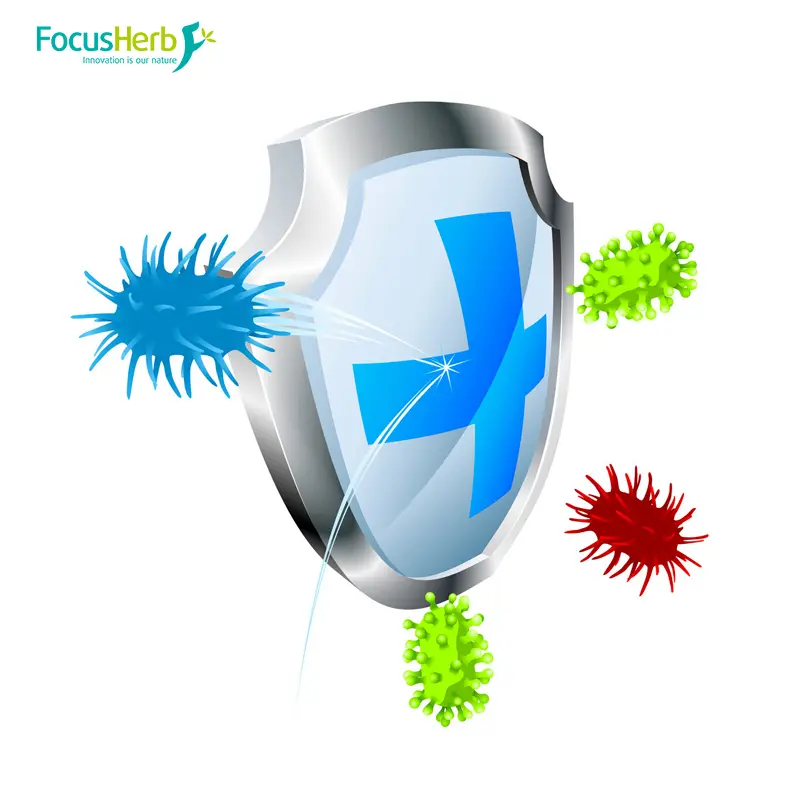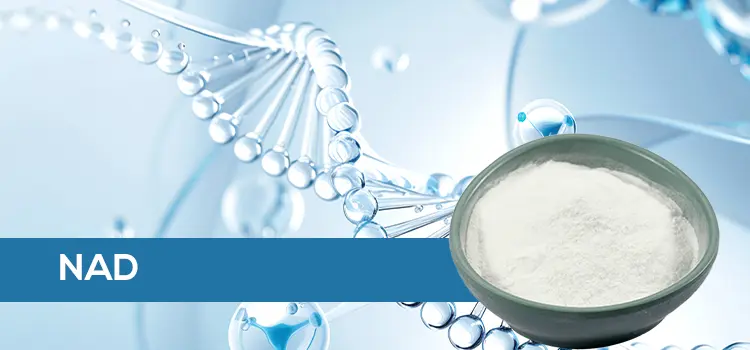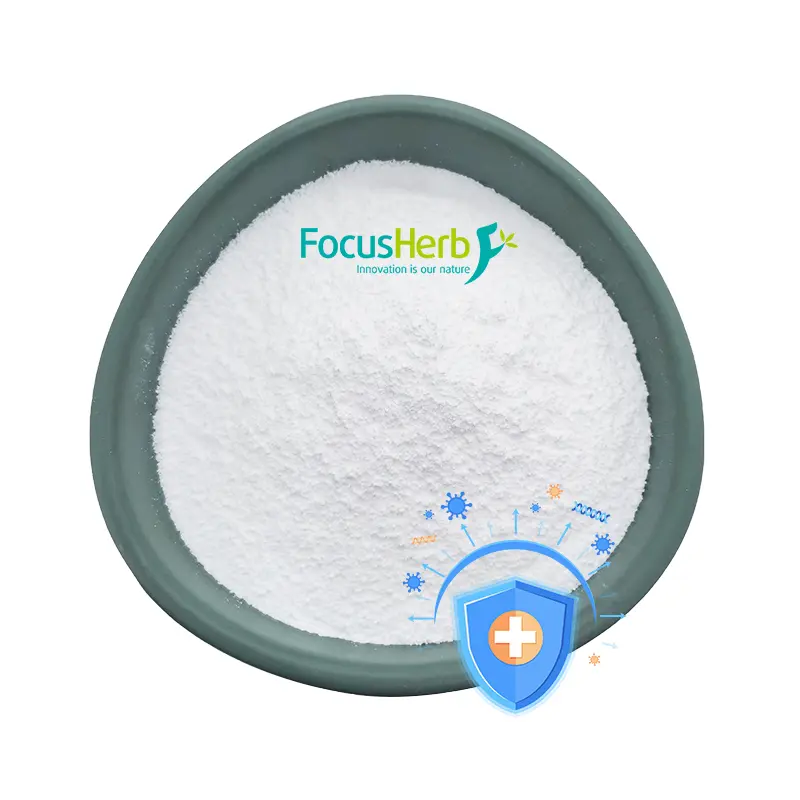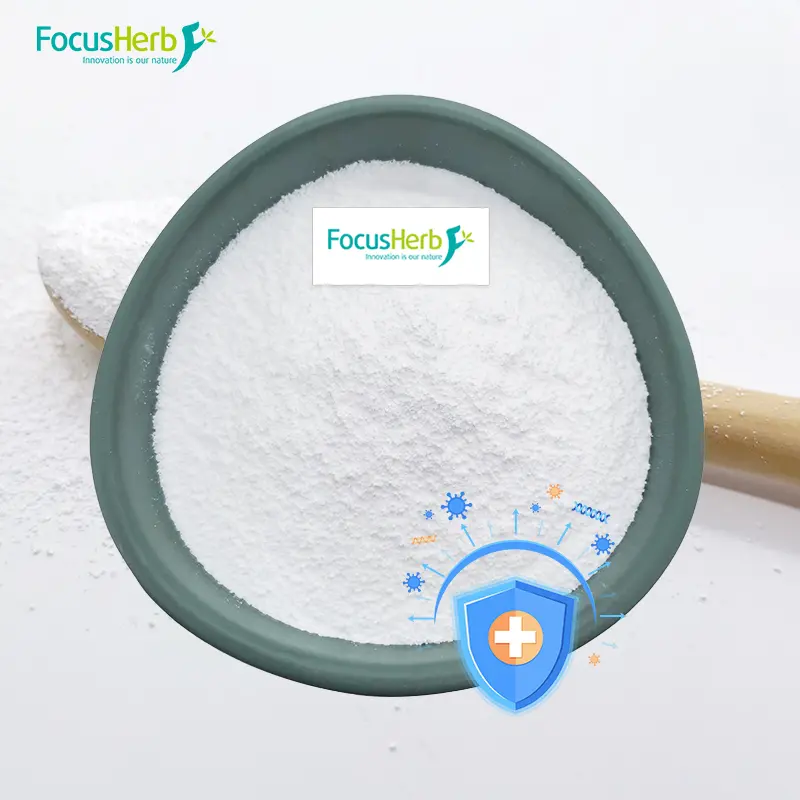NAD, short for Nicotinamide Adenine Dinucleotide, is an essential coenzyme in living organisms and plays a crucial role in life. Its discovery journey has been filled with twists and turns, embodying the wisdom and hard work of countless scientists. Over a century has passed since its discovery in 1904.
In 1904, British biochemist Sir Arthur Harden made an unexpected discovery while studying brewer’s yeast extract. He placed the yeast extract in a bag made of a semipermeable membrane and placed it in pure water. He observed a curious phenomenon: small molecules in the yeast extract passed through the membrane into the water, while larger molecules remained in the bag. This depleted the yeast enzyme activity that normally ferments sugars. However, when the water that had seeped out of the bag was added back into the bag, the yeast enzyme activity miraculously returned. After further research, Harden discovered that this small molecule contained a unique substance—a coenzyme, later confirmed to be NAD+. This marked the first discovery of a coenzyme-like substance in human history. For this seminal discovery, Harden was awarded the Nobel Prize in Chemistry in 1929. NAD+, due to its crucial role in providing energy in yeast cell metabolism, began to attract the attention and research of numerous scientists.
In the following decades, scientists continued to deepen their research on NAD. In 1920, German chemist Hans von Euler-Chelpin, using enzymes, not only successfully isolated and purified NAD+ for the first time, but also discovered its dinucleotide structure and optimized the enzymatic separation and purification process, laying a solid foundation for subsequent NAD research. For this discovery, he and Arthur Harden were jointly awarded the 1929 Nobel Prize in Chemistry. In 1930, German scientist Otto Warburg first discovered the crucial role of NAD+ as a coenzyme in material and energy metabolism, closely linking NAD+ to life metabolism and advancing NAD+ research into human medicine. The following year, he was awarded the Nobel Prize in Medicine for this discovery. In 1936, the brilliant German biochemist Otto Heinrich Warburg further revealed the function of NAD+ in fermentation reactions, discovering that the nicotinamide coenzyme NAD+ is essential for hydride transfer reactions, which are crucial for cellular metabolism and many other chemical processes necessary to sustain life.
Over time, the mystery of NAD was gradually unveiled. In 1938, Conrad Elvehjem discovered “anti-black tongue factor,” the first vitamin precursor of NAD, opening up new directions for NAD research. In 1948, Arthur Kornberg discovered the first NAD biosynthetic enzyme, purified the components required for the NAD+-producing reaction from yeast cells, and demonstrated that a chemical reaction pool could be used to generate NAD+ from the precursor molecule nicotinamide mononucleotide (NMN). In 1958, Jack Preiss and Philip Handler discovered the three biochemical steps involved in the conversion of niacin to NAD+, known as the Preiss-Handler pathway. This revealed how niacin, a vitamin B3, is converted to NAD+ in vivo, propelling research on the dietary applications of NAD+ to new heights. In 1963, Chambon, Weill, and Mandel reported that NAD+ provides the energy required to activate key nuclear enzymes, laying the foundation for a series of discoveries regarding the DNA repair enzyme PARP. PARP plays a key role in repairing DNA damage and regulating cell death, with changes in its activity correlating with changes in lifespan.
In the 21st century, scientists have made even more groundbreaking advances in NAD research. In 2000, MIT biologist Leonard Guarente discovered that both SIR (silent information regulator 2) and its mouse homolog, SIRT1, possess protein deacetylase activity. Sirtuin enzymes break down NAD into its component parts. Furthermore, the NAD+-dependent sir2 protein can extend the lifespan of brewer’s yeast, while the NAD+-dependent sir2.1 protein can extend the lifespan of Caenorhabditis elegans by nearly 50%. In 2004, a research group led by world-renowned chemist Stephen L. Helfand discovered that the NAD+-dependent dsir2 protein can extend the lifespan of fruit flies by approximately 10%-20%. In 2013, a mouse study by Professor Shin Ichiro Imai of the University of Washington School of Medicine found that increased NAD+ levels could restore mitochondrial function and that overexpression of the NAD+-dependent SIRT1 in the brain significantly extended the lifespan of both male and female mice. That same year, a Harvard Medical School research team found that after one week of NMN treatment in 22-month-old mice (equivalent to 60 human years), key indicators such as mitochondrial homeostasis and muscle health returned to those of 6-month-old mice (equivalent to 20 human years).
From its initial serendipitous discovery to the current in-depth understanding of its role in energy metabolism, DNA repair, aging, and disease regulation, NAD’s importance in life sciences has become increasingly prominent. Like a key, it unlocks the secrets of life, providing new insights and hope for combating aging and treating disease.
 NAD: Structure and Properties
NAD: Structure and Properties
Unique Molecular Structure
The molecular structure of NAD resembles a meticulously constructed “chemical edifice,” its fundamental components consisting of nicotinamide, adenine, ribose, and phosphate. From a microscopic perspective, nicotinamide and adenine, each a unique chemical group, occupy key positions within this “edifice.” Nicotinamide, a derivative of vitamin B3, is the core active site within the NAD molecule involved in redox reactions. Adenine, a key base in nucleic acids, forms the adenine nucleotide with ribose and phosphate. This nucleotide is ingeniously linked to the nicotinamide nucleotide via the phosphate group, forming NAD’s unique dinucleotide structure. This structure is not a random patchwork, but rather an optimized combination formed through a long process of biological evolution. The seamless collaboration of these components endows NAD with its powerful and unique biological functions.
The “Dual Nature” of Redox
In the microscopic world of cells, NAD exists in two active forms: the oxidized form (NAD+) and the reduced form (NADH). Like two sides of a coin, these two forms play crucial and complementary roles in cellular redox reactions. When metabolic reactions occur within cells, NAD+ demonstrates its role as an “electron acceptor,” actively accepting hydrogen ions (a proton and two electrons) from metabolic substrates while being reduced to NADH. This process is like NAD+ collecting energy “raw materials” from the cell’s “energy factory,” storing the chemical energy from the metabolic substrates as hydrogen ions.
Subsequently, during cellular respiration, NADH transforms into an “electron donor.” It enters the mitochondria and participates in the electron transport chain, gradually releasing electrons from stored hydrogen ions to a series of electron transporters while being oxidized and converted back into NAD+. This process is like NADH processing the collected energy “raw materials” in the “energy factory” and ultimately converting them into ATP, a form of energy that the cell can directly utilize. This back-and-forth cycle between NAD+ and NADH is like a never-ending “energy relay race,” continuously providing energy for various cellular activities and a key mechanism for maintaining cellular energy metabolism and normal physiological function.
NAD: Function and Mechanism
A “Booster” of Energy Metabolism
In the cellular energy metabolism “factory,” NAD is a versatile and crucial “worker.” Deeply involved in core metabolic pathways such as glycolysis, the tricarboxylic acid cycle, and oxidative phosphorylation, it is a key “booster” for converting nutrients into ATP, the cell’s usable energy.
Glycolysis, which takes place in the cytoplasm, is the initial stage of glucose breakdown metabolism, acting as a “prelude” to energy production. In this process, glyceraldehyde-3-phosphate dehydrogenase acts as the “conductor,” catalyzing the conversion of glyceraldehyde-3-phosphate to 1,3-bisphosphoglycerate, while NAD+ acts as an “electron collector,” accepting the hydrogen ions produced during the reaction and being reduced to NADH. This process not only provides the necessary conditions for subsequent glycolysis reactions but also produces NADH, which carries high-energy electrons. These electrons act as “energy raw materials,” preparing the way for subsequent energy production. When pyruvate produced by glycolysis enters the mitochondrial matrix, the Krebs cycle—the core movement of energy production—begins. Within the Krebs cycle, enzymes such as isocitrate dehydrogenase and α-ketoglutarate dehydrogenase act like skilled craftsmen, catalyzing a series of reactions in which NAD+ continuously accepts hydrogen ions and is repeatedly reduced to NADH. In each cycle of the Krebs cycle, NAD+ participates in multiple reactions, collecting a large amount of “energy raw materials” while simultaneously producing carbon dioxide and several high-energy intermediates, providing a rich material foundation for cellular energy metabolism.
The high-energy electrons carried by NADH then enter the electron transport chain on the inner mitochondrial membrane. This is the process of oxidative phosphorylation, the culmination of energy production. NADH acts as an “energy messenger,” transferring electrons to a series of electron transporters along the electron transport chain, ultimately transferring electrons to oxygen and producing water. During this process, the energy released by electron transfer is used to pump protons from the mitochondrial matrix to the intermembrane space, forming a proton gradient. This proton gradient acts as an “energy reservoir,” storing enormous amounts of energy. When protons flow back into the mitochondrial matrix through ATP synthase, their potential energy drives ATP synthase to synthesize ATP, converting the energy stored in the proton gradient into ATP that the cell can directly utilize. This completes the final conversion from the chemical energy of nutrients to the active chemical energy of ATP.
The “Guardian” of DNA Repair
Cells constantly face challenges from various internal and external factors, such as UV radiation, chemical attacks, and reactive oxygen species produced by the cell’s own metabolism. These factors can damage DNA molecules. NAD acts as a loyal “guardian” in this process, essential for maintaining the activity of DNA repair enzymes within the cell.
The poly(ADP-ribose) polymerase (PARP) family is a crucial “repair team” in the DNA repair process, and NAD is a crucial “supply” for this team’s work. When a cell’s DNA is damaged, it acts as an “emergency repair signal,” and PARP is activated.
NAD: Research and Applications
Frontier Research Results
In recent years, NAD research in areas such as aging and disease treatment has yielded a series of remarkable results, bringing new hope and possibilities to human health.
In aging research, numerous studies have shown that NAD+ levels are closely linked to the aging process. With aging, NAD+ levels in the human body gradually decline, which is believed to be a major factor in cellular aging and the decline of body function. Scientists at the University of Washington School of Medicine in the United States have discovered that supplementing with the NAD+ precursor nicotinamide mononucleotide (NMN) can significantly increase NAD+ levels in aged mice, restoring their mitochondrial function, enhancing muscle strength and endurance, and even restoring some physiological indicators to the levels of young mice. This research, published in the journal Cell, has garnered widespread attention in the scientific community and opened up new avenues for research on delaying aging.
NAD also demonstrates tremendous potential in disease treatment. In 2020, Navdeep S. Chandel’s research group at Northwestern University, using a mouse model of brain mitochondrial Complex I dysfunction, found that NAD+ regeneration could save lifespan but not ataxia. Published in Cell Metabolism, this research provides new insights into treating brain diseases associated with mitochondrial Complex I dysfunction. Furthermore, the Fan research group at ShanghaiTech University, published recent research on the medical website BioRxiv, showing that NAD+ supplementation can significantly enhance the therapeutic effects of immunotherapy against cancer. Using techniques such as CRISPR screening, the researchers discovered that NAD+ levels can directly regulate T cell activation and their ability to kill tumors by controlling mitochondrial energy production. This finding was applied to cancer immunotherapy and tested in mice. The results showed that NAD+ supplementation combined with immunotherapy successfully eliminated tumors in all experimental mice. This finding suggests that combining NAD+ supplementation with immunotherapy may represent a major breakthrough in existing cancer treatment strategies.
Applications in Healthcare
NAD has broad application prospects in healthcare and is expected to become a powerful tool for improving human health. With aging, the body’s metabolic function gradually declines, making it more susceptible to various metabolic diseases, such as obesity, diabetes, and cardiovascular disease. As a key coenzyme in cellular energy metabolism, NAD plays a vital role in maintaining metabolic homeostasis. Studies have found that supplementing with NAD+ can improve metabolic function, increase insulin sensitivity, lower blood sugar levels, and reduce fat accumulation, thereby playing a preventive and therapeutic role in metabolic diseases. A study in obese mice demonstrated that supplementing with the NAD+ precursor NMN significantly reduced body weight and body fat percentage, improved insulin resistance, and enhanced glucose tolerance.
NAD also has unique benefits in enhancing physical function. NAD participates in cellular energy metabolism, providing energy for cells. Adequate NAD+ levels ensure cellular energy supply and promote cell regeneration, thereby enhancing endurance, fatigue resistance, and immunity. For athletes or those who regularly engage in high-intensity exercise, NAD+ supplementation may help improve performance and accelerate recovery. In some preliminary human trials, NAD+ supplementation has been found to improve athletic performance and enhance physical vitality in older adults.
NAD also demonstrates significant potential in preventing and ameliorating age-related diseases. As mentioned earlier, decreased NAD+ levels are closely associated with aging, and many age-related diseases, such as neurodegenerative diseases like Alzheimer’s and Parkinson’s, as well as cardiovascular disease and cancer, are linked to reduced NAD+ levels. NAD+ supplementation has the potential to delay the onset and progression of these diseases and improve patients’ quality of life. Some studies have shown that NAD+ supplementation can improve cognitive function and alleviate symptoms in Alzheimer’s disease models in mice. It can also protect the cardiovascular system and reduce the risk of cardiovascular disease.
Potential in Cosmetics
In the cosmetics field, NAD, due to its antioxidant and anti-aging properties, is becoming a hot topic for research and application, offering new solutions for skin health and beauty. With aging, NAD+ levels in the skin gradually decline, weakening the metabolic and repair functions of skin cells. This weakens the skin’s ability to repair itself, leading to wrinkles, sagging, dryness, and roughness, among other aging symptoms. As a crucial coenzyme, NAD+ plays a crucial role in regulating cellular function, DNA repair, and anti-aging. Increasing NAD+ levels in the skin can activate cellular energy metabolism, enhance cell vitality and regenerative capacity, thereby improving skin texture and appearance and delaying aging.
Currently, the direct application of NAD+ in skincare products faces numerous challenges. NAD+ molecules are relatively large, making it difficult to penetrate the stratum corneum, the surface layer of the skin. Furthermore, they are easily oxidized and can lose their activity when exposed to air, light, and other environmental factors. This places extremely high demands on product stability and formulation design. To address these issues, scientists have turned their attention to NAD+ precursors. There are currently five known NAD+ precursor molecules: tryptophan (Trp), niacin (NA), nicotinamide (NAM), nicotinamide riboside (NR), and dihydronicotinamide riboside (NRH). Through enzymatic reactions in the skin, these precursors can be converted into NAD+, thereby enhancing its effects on the skin. For example, nicotinamide mononucleotide (NMN), synthesized from NAM and NR, is a common NAD+ precursor. Some skincare products have begun adding NMN to boost NAD+ levels in the skin.
Many beauty companies are also developing NAD+-related products. At the beginning of 2024, L’Oréal significantly updated its Lancôme Black Gold line, incorporating the innovative Blackbiosis ingredient developed at the end of 2023. According to Lancôme’s official website, this ingredient can activate NAD+ in the body at its source, promoting skin cell renewal. According to the website, a 0.5% addition can increase cellular NAD+ levels by 27%. South Korean beauty giant LG Household & Health Care has also achieved a major breakthrough. Through pure liposomal technology, they significantly enhance the stability of existing NAD+, making it easier for skin to absorb. They developed “NAD Renewal 24,” which can increase skin antioxidant efficacy by 136% and repair effects by 69%. With continued in-depth research on NAD+’s mechanisms of action and technological innovation, NAD+ is expected to achieve further breakthroughs in the cosmetics field, providing consumers with more effective skincare experiences.

Currently, NAD’s applications in healthcare and cosmetics are beginning to show promise, offering new avenues for improving human health and skin condition. However, our understanding of NAD is still evolving, and future research holds boundless potential. While some progress has been made in aging research, further exploration of the complex relationship between NAD and aging is needed to clarify its mechanisms of action and develop more effective anti-aging strategies. In the field of disease treatment, more clinical trials are needed to validate the safety and efficacy of NAD in treating various diseases and advance its application from laboratory research to clinical practice.
With the continuous advancement of science and technology, we believe that more advanced research methods and technologies will be applied to NAD research in the future, helping us to gain a deeper understanding of its mysteries. NAD is also expected to play a role in even more areas, bringing greater benefits to human health and well-being. Whether it is in fighting aging, treating difficult diseases, or improving the quality of life, NAD may become the “key” to unlock a new healthy life. Let us wait and see.
Previous: No Information



















 NAD: Structure and Properties
NAD: Structure and Properties
